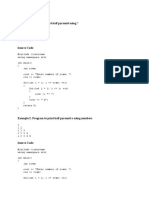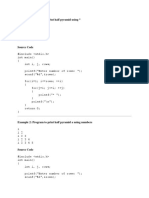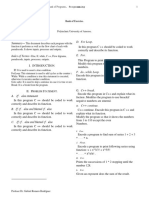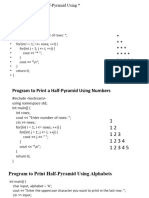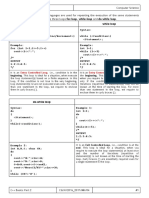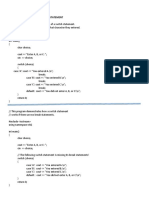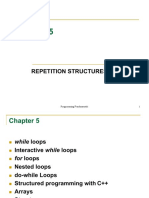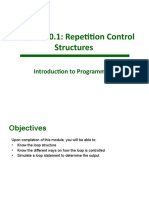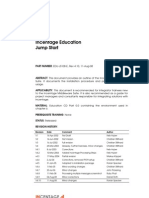0% found this document useful (0 votes)
19 views10 pagesFor Loop and Nested Loop
The document is a lab manual for Programming Fundamentals at the University of Management and Technology, focusing on for loops and nested for loops in C++. It includes coding examples for calculating averages, counting odd and even numbers, and printing various patterns like half-pyramids. The manual provides detailed explanations and code snippets to illustrate the concepts effectively.
Uploaded by
iqraghouri440Copyright
© © All Rights Reserved
We take content rights seriously. If you suspect this is your content, claim it here.
Available Formats
Download as PDF, TXT or read online on Scribd
0% found this document useful (0 votes)
19 views10 pagesFor Loop and Nested Loop
The document is a lab manual for Programming Fundamentals at the University of Management and Technology, focusing on for loops and nested for loops in C++. It includes coding examples for calculating averages, counting odd and even numbers, and printing various patterns like half-pyramids. The manual provides detailed explanations and code snippets to illustrate the concepts effectively.
Uploaded by
iqraghouri440Copyright
© © All Rights Reserved
We take content rights seriously. If you suspect this is your content, claim it here.
Available Formats
Download as PDF, TXT or read online on Scribd
/ 10
